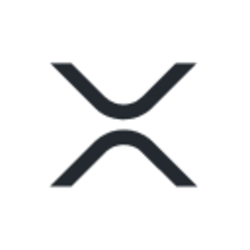- The XRP Ledger, supported by Ripple, experienced a substantial drop in transaction volume during Q2 2024, as detailed in the recent XRP Report.
- This decline is part of a larger trend noticed across major blockchain protocols, with XRPL recording 86.39 million transactions—a 65.6% fall from the previous quarter.
- Remarkably, despite the decline in transaction volume, the network’s average transaction fees saw a significant increase of 168%, reaching 0.00394 XRP.
The latest XRP Ledger report sheds light on the intricate changes within Ripple’s blockchain network, offering critical insights into transaction trends and fee dynamics.
Q2 2024: A Challenging Quarter for XRPL
The second quarter of 2024 was marked by a notable downturn in XRP’s transaction activity, echoing a broader trend observed in other leading cryptocurrencies like Bitcoin and Ethereum. Yet, in contrast to the falling transaction volume, XRP’s spot trading volumes stayed relatively robust, particularly on major exchanges such as Binance, Bybit, and Upbit. Interestingly, the majority of XRP transactions during this period involved stablecoins, with trading against fiat currencies dropping to just 10%.
Expectations and Strategic Developments
Ripple remains optimistic about the future, anticipating a rise in network activity due to several upcoming updates. Significant among these are partnerships with regulated entities like Archax and OpenEden, poised to bring substantial tokenized real-world assets onto the XRPL. Additionally, the anticipated launch of a USD Stablecoin later this year is expected to further invigorate XRP’s ecosystem. These advancements suggest that while the current metrics reflect a dip, the groundwork for future growth is firmly being laid.
Innovation and Technological Evolution
Turning our attention to technological strides, Ripple has highlighted several innovations that promise to enhance XRPL’s capacity and appeal. Foremost among these is the XRPL Ethereum Virtual Machine (EVM) sidechain, which aims to improve interoperability with other blockchain networks. Additional technological enhancements include Axelar interoperability and the introduction of a new Oracle and Multi-Purpose Token (MPT) standard. Monica Long, President of Ripple, underscored the potential these developments hold for the integration of tokenized real-world assets, which could drive significant growth in upcoming quarters.
Regulatory Landscape and Legal Proceedings
On the legal front, Ripple is closely monitoring the ongoing case with the U.S. Securities and Exchange Commission (SEC) concerning institutional XRP sales. The outcome of this case is highly anticipated, as it could have far-reaching implications for Ripple’s operations and regulatory standing. While this legal uncertainty persists, Ripple remains hopeful for a just resolution that could potentially remove a significant overhang from its strategic horizon.
Conclusion
In summation, despite the observed decline in transaction volumes, Ripple’s strategic initiatives and technological advancements seem well-positioned to reinforce XRPL’s growth trajectory in the coming quarters. The company’s proactive approach in forming significant partnerships and rolling out innovative solutions underscores its resilience and forward-looking stance. For investors and stakeholders, these developments offer a complex yet cautiously optimistic outlook as Ripple navigates the multifaceted landscape of blockchain technology and regulatory scrutiny.
